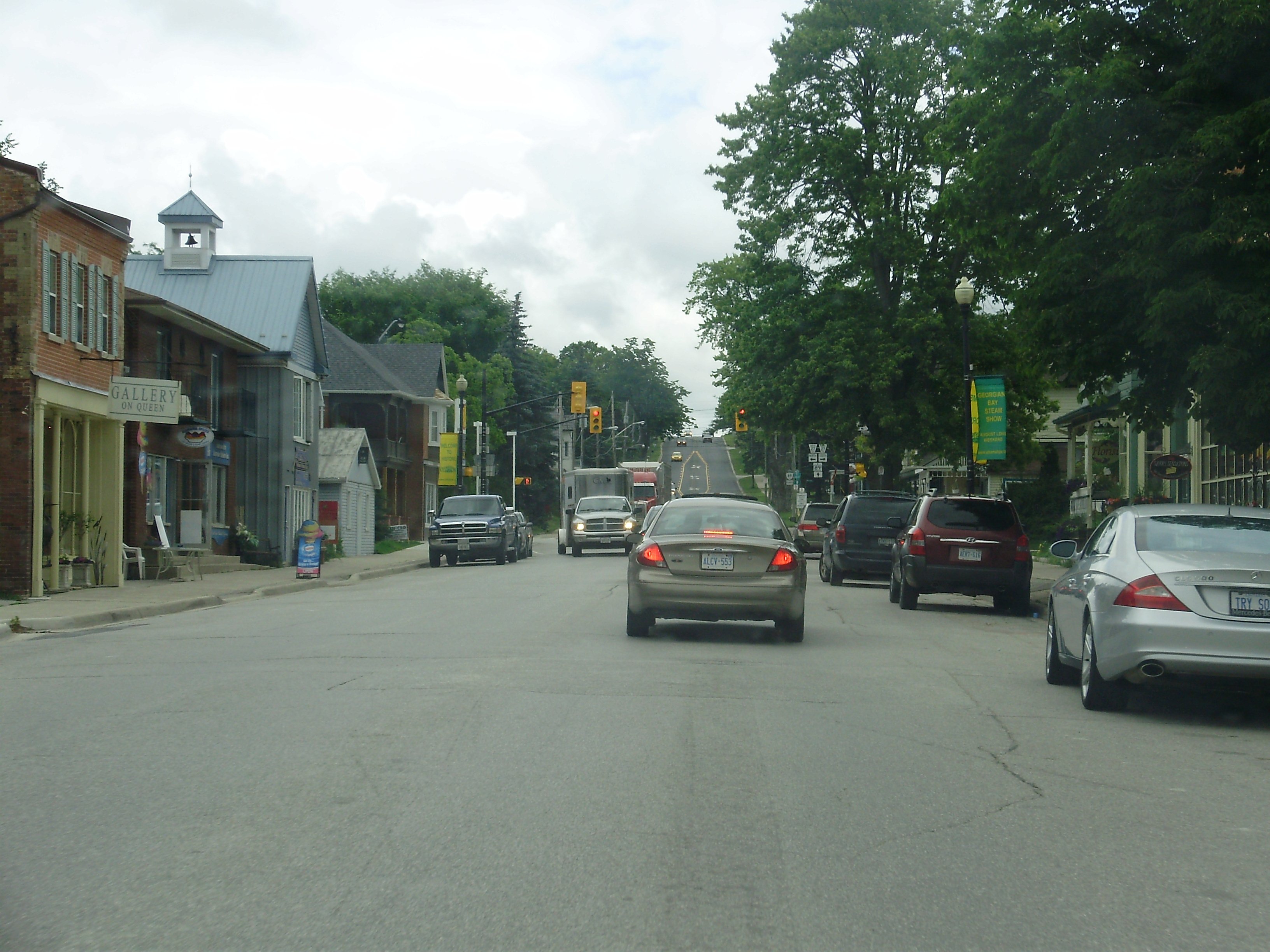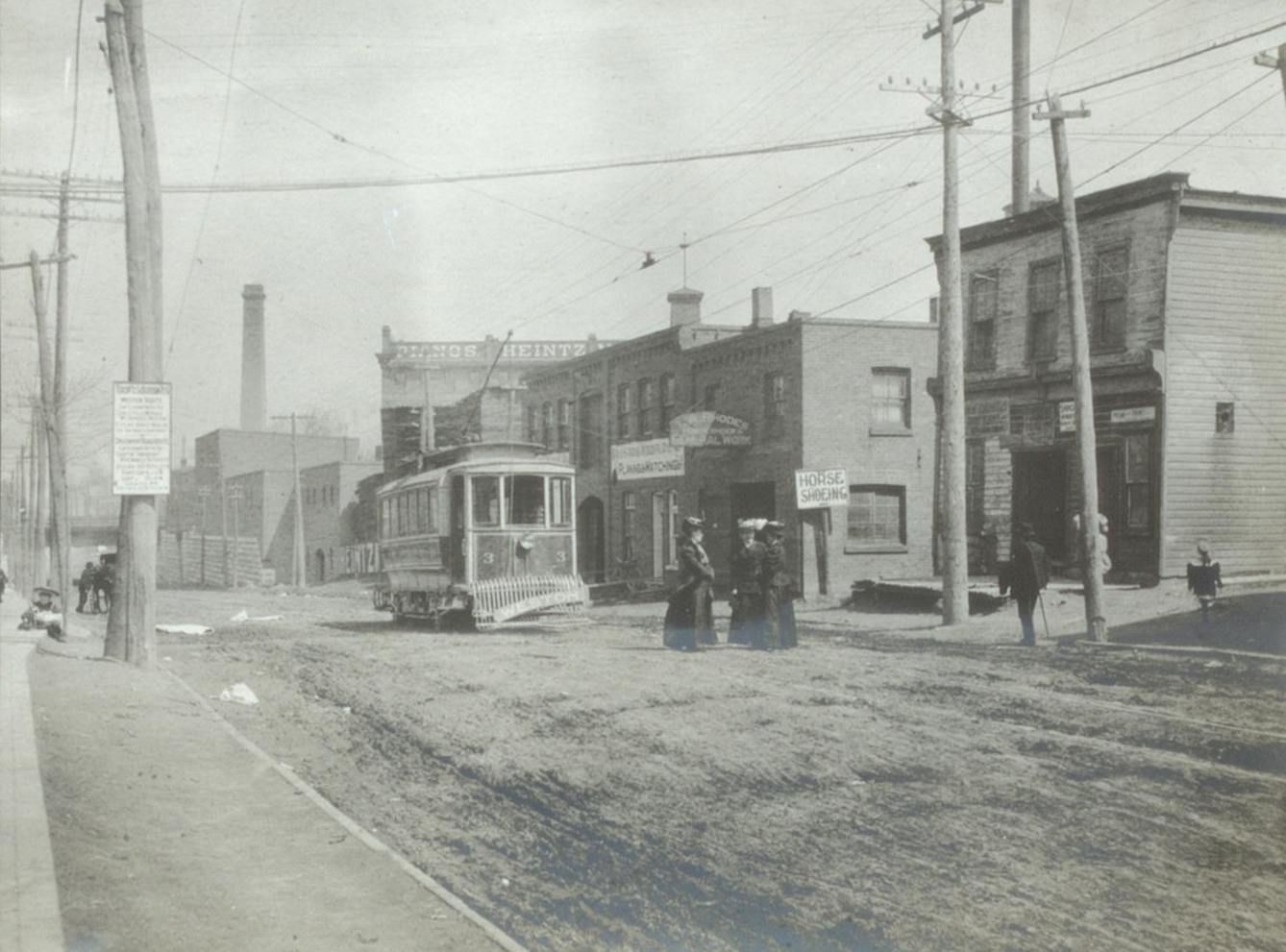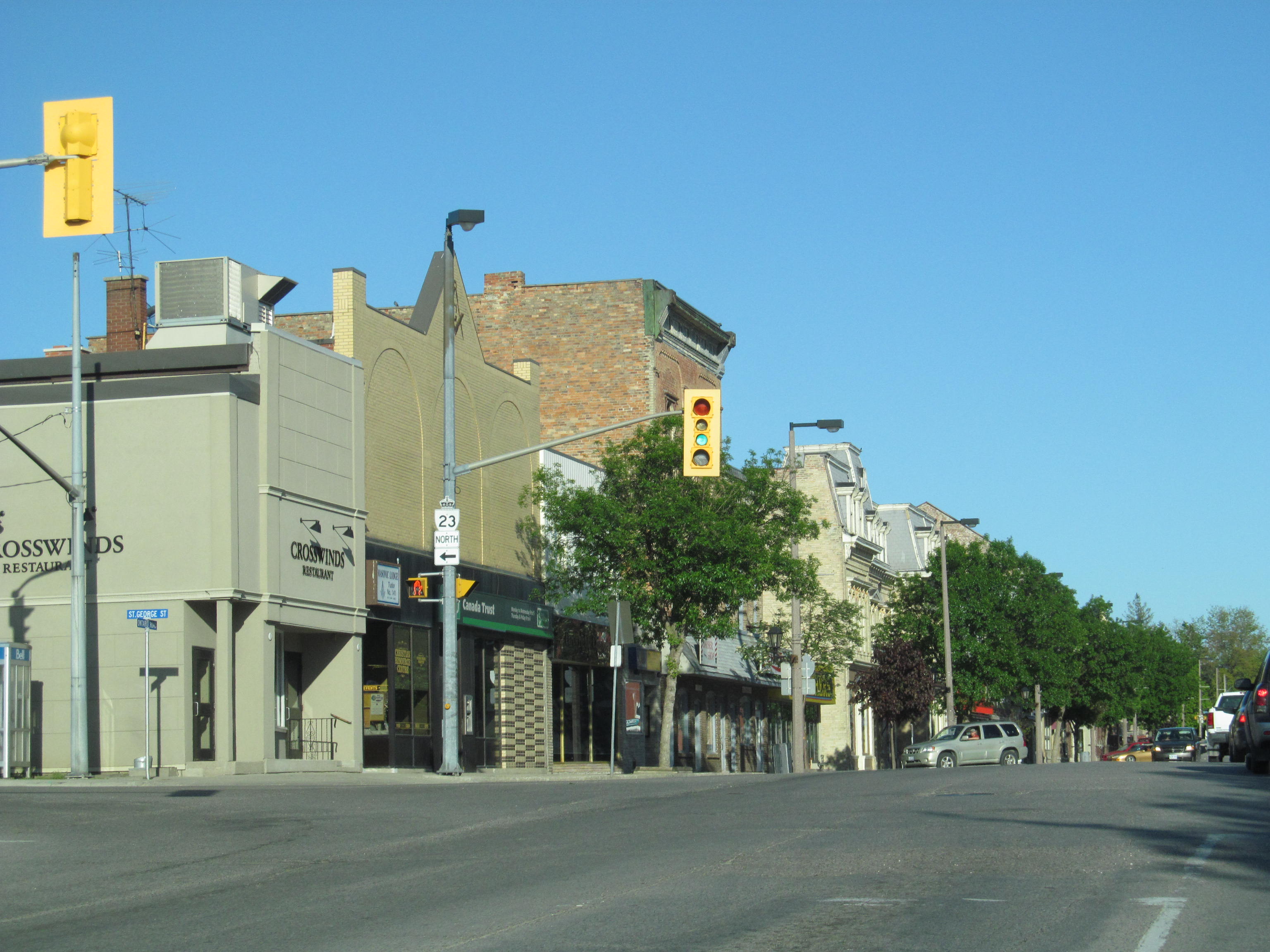|
Ontario Stockyards
Ontario Stockyards is a livestock auction facility located in Cookstown, Ontario and serves much of Southern Ontario in selling cattle, pork and other livestock from producers to buyers to process as meat. History St. Lawrence Market 1803-1877 The buying and selling of livestock in early Toronto was done at St. Lawrence Market beginning in 1803. Most livestock came from farmers near Toronto. Western Cattle Market With the arrival of trains, livestock from further sources could be sold in Toronto. In 1877 the cattle trade moved from the cramped quarters of the city market to a location next to the Grand Trunk Railway at what is now Wellington Street West and Tecumseth Street. Trade of sheep, pigs would eventually be moved over and by 1887 odour and pollution at the Western site became an issue. There was also competition from various abattoirs located in the city including: * Harris Abattoir (near Western Market) - founded by butcher William Harris (1848-1914) as part of W Harri ... [...More Info...] [...Related Items...] OR: [Wikipedia] [Google] [Baidu] |
Cookstown, Ontario
Innisfil is a town in Ontario, Canada, located on the western shore of Lake Simcoe in Simcoe County, immediately south of Barrie and north of Toronto. It has historically been a rural area, but due to being geographically sandwiched in between the high-growth areas of Barrie area and York Region has meant greater residential development in Innisfil. Etymology The name ''Innisfil'' comes from the Irish ''Inis Fáil'', an ancient mythological name for Ireland. History The history of Innisfil spans a period in excess of 170 years. The Town was hewn from almost unbroken virgin forests which had been home to the Huron Indians, and was first surveyed in 1820. The area encompassed 68,653 acres (278 km²), including the villages of Allandale, Tollendal, Painswick, Minets Point, and Holly at the time. The first settlers were the Hewson and Soules families who came by way of the East Holland River and Lake Simcoe to settle at Point Endeavour; they renamed the area Hewson's Point (l ... [...More Info...] [...Related Items...] OR: [Wikipedia] [Google] [Baidu] |
Southern Ontario
Southern Ontario is a primary region of the province of Ontario, Canada, the other primary region being Northern Ontario. It is the most densely populated and southernmost region in Canada. The exact northern boundary of Southern Ontario is disputed; however, the core region is situated south of Algonquin Park, the latter being in an area of transition between coniferous forest north of the French and Mattawa Rivers and southern deciduous forest. It covers between 14 and 15% of the province, depending on the inclusion of the Parry Sound and Muskoka districts which also lie in the transitional area between northern and southern forest regions. With approximately 13.5 million people, the region is home to approximately 36% of Canada's population of 37.0 million. Southern Ontario differs greatly from Northern Ontario, in that it has a much higher population density, a different climate, and a different culture than its northern counterpart. It is broken into smaller subregions, i ... [...More Info...] [...Related Items...] OR: [Wikipedia] [Google] [Baidu] |
Grand Trunk Railway
The Grand Trunk Railway (; french: Grand Tronc) was a railway system that operated in the Canadian provinces of Quebec and Ontario and in the American states of Connecticut, Maine, Michigan, Massachusetts, New Hampshire, and Vermont. The railway was operated from headquarters in Montreal, Quebec, with corporate headquarters in London, United Kingdom (4 Warwick House Street). It cost an estimated $160 million to build. The Grand Trunk, its subsidiaries, and the Canadian Government Railways were precursors of today's Canadian National Railway. GTR's main line ran from Portland, Maine to Montreal, and then from Montreal to Sarnia, Ontario, where it joined its western subsidiary. The GTR had four important subsidiaries during its lifetime: * Grand Trunk Eastern which operated in Quebec, Vermont, New Hampshire and Maine. *Central Vermont Railway which operated in Quebec, Vermont, Massachusetts, and Connecticut. *Grand Trunk Pacific Railway which operated in Northwestern Ontario ... [...More Info...] [...Related Items...] OR: [Wikipedia] [Google] [Baidu] |
William Davies Company
William Davies Company was a pork processing and packing company in Toronto, Ontario, Canada. At one time, it was the largest pork packer in the British Empire, and it operated Canada's first major chain of food stores.Points of Interest Along Lost Streams: Toronto Pork Packing Plant ''Lostrivers.ca''. The Toronto Green Community and the Toronto Field Naturalists. Retrieved December 3, 2007.Rust-D'Eye, George H. ''Cabbagetown Remembered''. Erin, Ontario: Boston Mills Press, 1984. p. 100.MacLachlan, Ian. ''Kill and Chill: Restructuring Canada's Beef Commodity Chain.'' University of Toronto Press, 2002. Pages 152, 188, 203 and 297. One of Toronto's longstanding nicknames, " [...More Info...] [...Related Items...] OR: [Wikipedia] [Google] [Baidu] |
The Junction
The Junction is a neighbourhood in Toronto, Ontario, Canada, that is near the West Toronto Diamond, a junction of four railway lines in the area. The neighbourhood was previously an independent city called West Toronto, that was also its own federal electoral district until amalgamating with the city of Toronto in 1909. The main intersection of the area is Dundas Street West and Keele Street. The Stockyards is the northeastern quadrant of the neighbourhood. History As with most Toronto neighbourhoods outside of the central downtown core, the area was primarily rural until the 1870s. John Scarlett was the first land owner and employer in the area and built his home "Runnymede" in 1838, near where Dundas Street West and St. John's Road meet today. By 1817 he had acquired most of property that is now the Junction and much more to the north and west to the Humber River. From 1857 to 1876 the Carlton Race Course dominated the southeast of the neighbourhood. The race track was own ... [...More Info...] [...Related Items...] OR: [Wikipedia] [Google] [Baidu] |
Western Cattle Market
Western may refer to: Places *Western, Nebraska, a village in the US *Western, New York, a town in the US *Western Creek, Tasmania, a locality in Australia *Western Junction, Tasmania, a locality in Australia *Western world, countries that identify with shared "Western" culture Arts and entertainment Films * ''Western'' (1997 film), a French road movie directed by Manuel Poirier * ''Western'' (2017 film), a German-Austrian film Genres *Western (genre), a category of fiction and visual art centered on the American Old West **Western fiction, the Western genre as featured in literature **Western music (North America), a type of American folk music Music * ''Westerns'' (EP), an EP by Pete Yorn *WSTRN, a British hip hop group from west London Business *The Western, a closed hotel/casino in Las Vegas, United States *Western Cartridge Company, a manufacturer of ammunition *Western Publishing, a defunct publishing company Educational institutions *Western Washington University i ... [...More Info...] [...Related Items...] OR: [Wikipedia] [Google] [Baidu] |
Canada Packers
Maple Leaf Foods Inc. is a Canadian consumer packaged meats company. Its head office is in Mississauga, Ontario. History Maple Leaf Foods is the result of the 1991 merger between Canada Packers and Maple Leaf Mills. Canada Packers was founded in 1927 as a merger of several major Toronto meat packers, most prominently William Davies Company and was immediately Canada's largest food processor, a title it would hold for the next sixty years. Already in the 1930s, it used the brand name ''Maple Leaf'' for its pork products. Its main business was pork, and its massive operations processing hogs for export to the United Kingdom helped Toronto earn its nickname "Hogtown". Moving into western Canada it became Canada's largest beef slaughterer. In 1944, it also entered the tanning industry with the acquisition of Beardmore & Co. Canada Packers diversified into other food products including ice cream, cheese, and canned and frozen fruits and vegetables, by 1950 marketed under the ... [...More Info...] [...Related Items...] OR: [Wikipedia] [Google] [Baidu] |
Burlington, Ontario
Burlington is a city in the Regional Municipality of Halton at the northwestern end of Lake Ontario in Ontario, Canada. Along with Milton to the north, it forms the western end of the Greater Toronto Area and is also part of the Hamilton metropolitan census area. History Before the 19th century, the area between the provincial capital of York and the township of West Flamborough was home to the Mississauga nation. In 1792, John Graves Simcoe, the first lieutenant governor of Upper Canada, named the western end of Lake Ontario "Burlington Bay" after the town of Bridlington in the East Riding of Yorkshire, England. The British purchased the land on which Burlington now stands from the Mississaugas in Upper Canada Treaties 3 (1792), 8 (1797), 14 (1806), and 19 (1818). Treaty 8 concerned the purchase of the Brant Tract, on Burlington Bay which the British granted to Mohawk chief Joseph Brant for his service in the American Revolutionary War. Joseph Brant and his household se ... [...More Info...] [...Related Items...] OR: [Wikipedia] [Google] [Baidu] |
Woolwich, Ontario
The Township of Woolwich is a rural township in Southwestern Ontario, Canada, considered as a municipality. The Township is located in the northeast part of Waterloo Region and is made up of 10 small communities, with Elmira, Ontario the largest and St. Jacobs, Ontario the second largest. The population at the time of the 2021 Census was 26,999, up from the 2016 population of 25,006. Waterloo Region is still home to the largest population of Old Order Mennonites in Canada, particularly in the areas around St Jacobs and Elmira. They are often seen on the local roads using their traditional horse and buggy transportation; many also use horses to pull the implements in their farm fields. Woolwich is part of the Regional Municipality of Waterloo and is located directly to the north and east of the City of Waterloo. It is bounded by the cities of Kitchener, Waterloo, and Cambridge. The township is a municipality as established by the Regional Municipality of Waterloo Act 1972, whic ... [...More Info...] [...Related Items...] OR: [Wikipedia] [Google] [Baidu] |
Mitchell, Ontario
Mitchell is a community in the municipality of West Perth, part of Perth County, Ontario, Canada. It is located at the intersection of Ontario Highways 8 and 23, northwest of Stratford, and north of London. Mitchell is no longer a separate entity. On January 1, 1998, the town amalgamated with the neighbouring Townships of Logan, Fullarton, and Hibbert to form the new Municipality of West Perth. As of 2016, the former town of Mitchell has a population of 4,573 in a land area of ; it has 1,827 occupied private dwellings. History Mitchell was named for a settler of the same name who built a small shanty on the nearby Thames River. "Perhaps the only place name in Ontario named for a negro". Post office opened in 1842. According to a historic plaque erected by the Province, the Canada Company laid out a town plot (Mitchell) on the Huron Road in 1836. In 1837 a log building was built by William Hicks along Huron Road; this was the first settlement in the area. A sawmill wa ... [...More Info...] [...Related Items...] OR: [Wikipedia] [Google] [Baidu] |
Meat Packing Industry In Canada
Meat is animal flesh that is eaten as food. Humans have hunted, farmed, and scavenged animals for meat since prehistoric times. The establishment of settlements in the Neolithic Revolution allowed the domestication of animals such as chickens, sheep, rabbits, pigs, and cattle. This eventually led to their use in meat production on an industrial scale in slaughterhouses. Meat is mainly composed of water, protein, and fat. It is edible raw but is normally eaten after it has been cooked and seasoned or processed in a variety of ways. Unprocessed meat will spoil or rot within hours or days as a result of infection with, and decomposition by, bacteria and fungi. Meat is important to the food industry, economies, and cultures around the world. There are nonetheless people who choose to not eat meat (vegetarians) or any animal products (vegans), for reasons such as taste preferences, ethics, environmental concerns, health concerns or religious dietary rules. Terminology ... [...More Info...] [...Related Items...] OR: [Wikipedia] [Google] [Baidu] |




.jpg)

.jpg)

